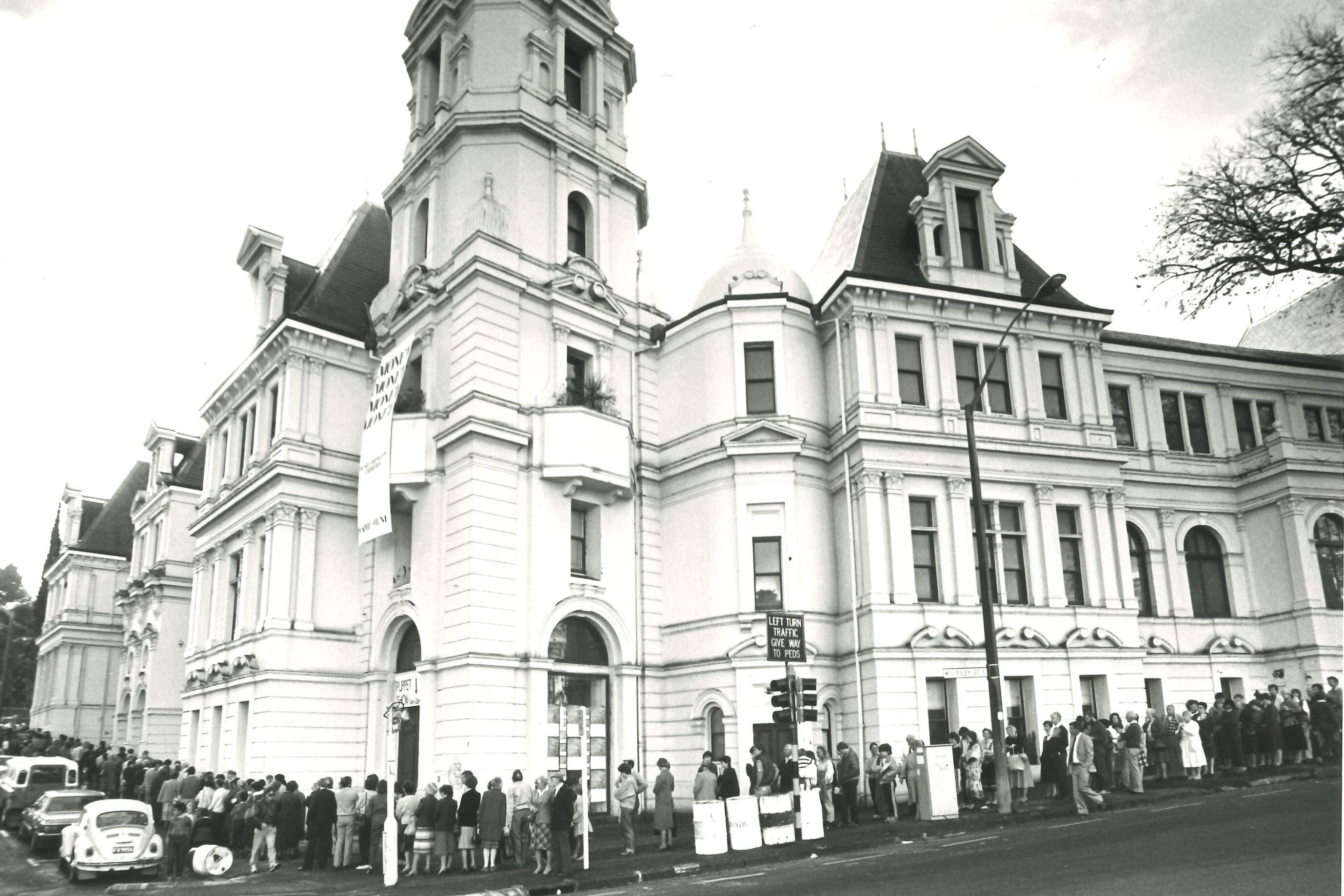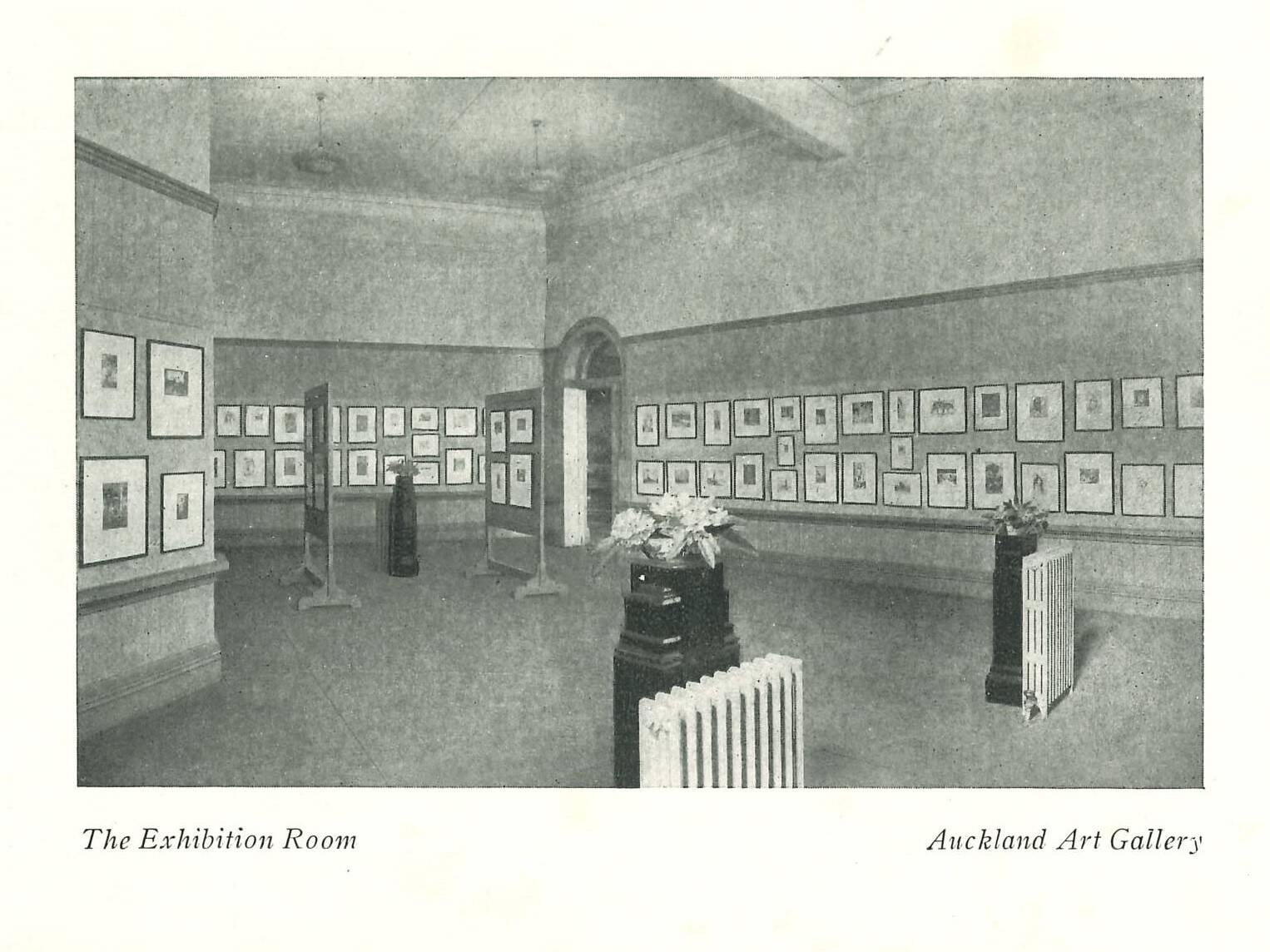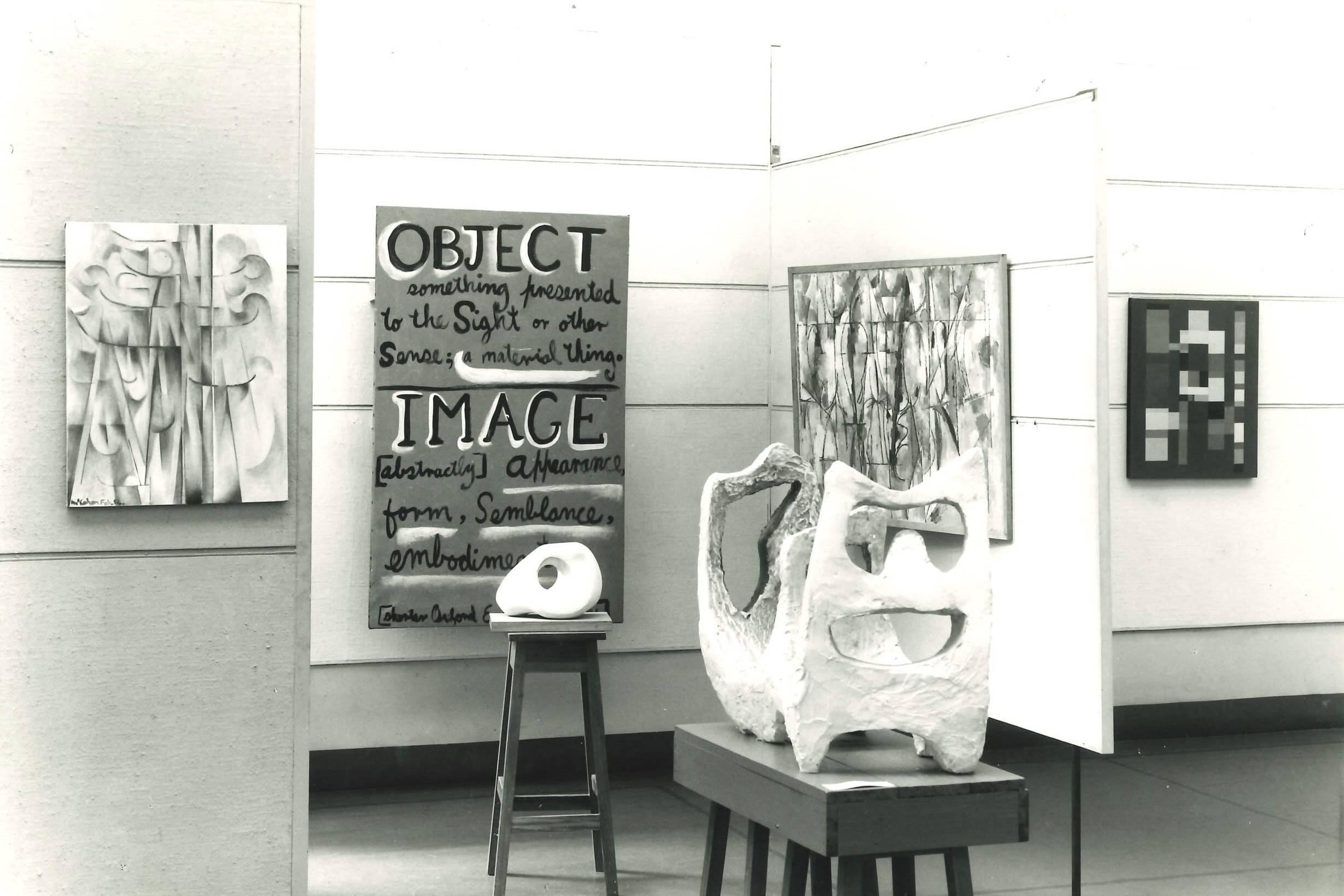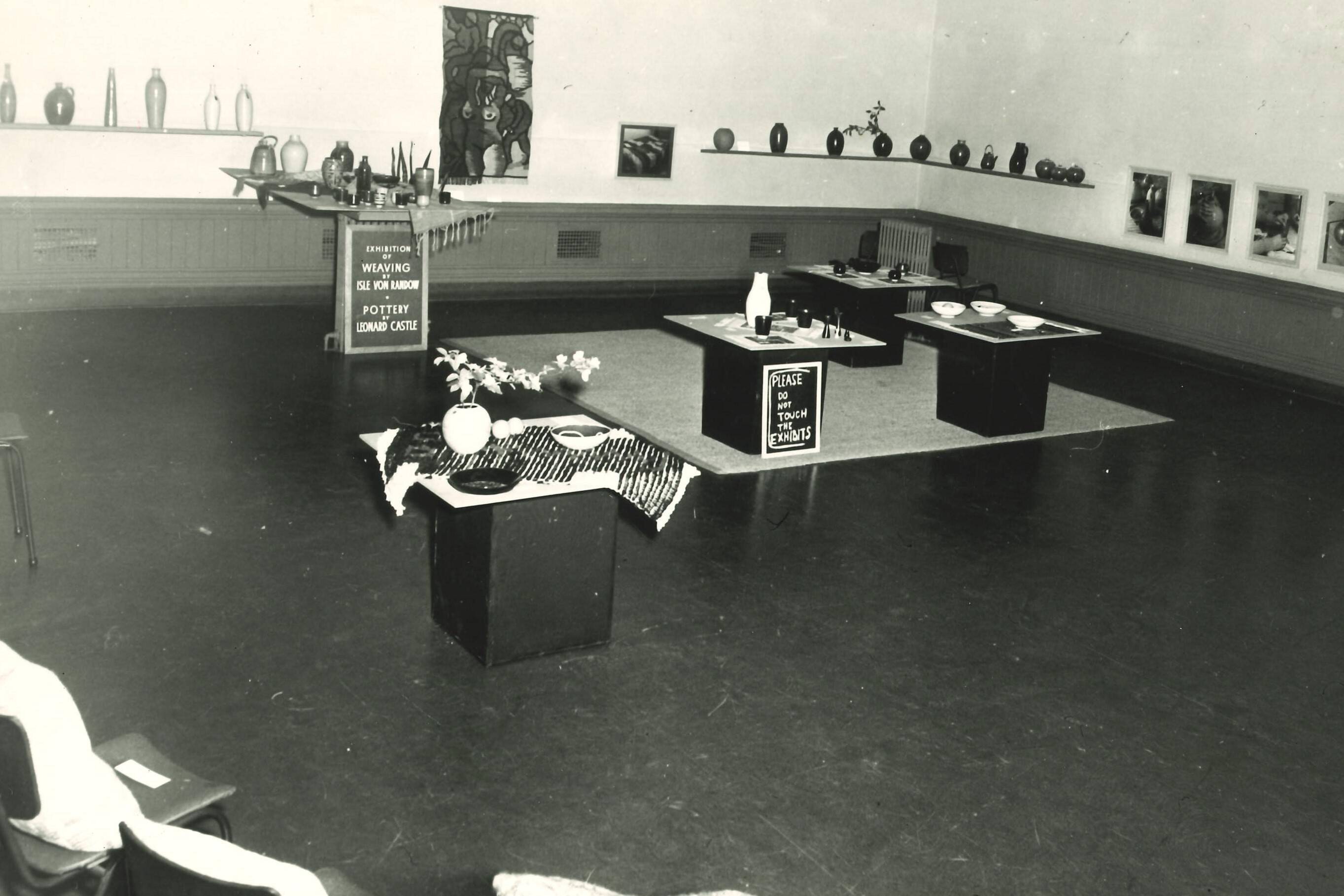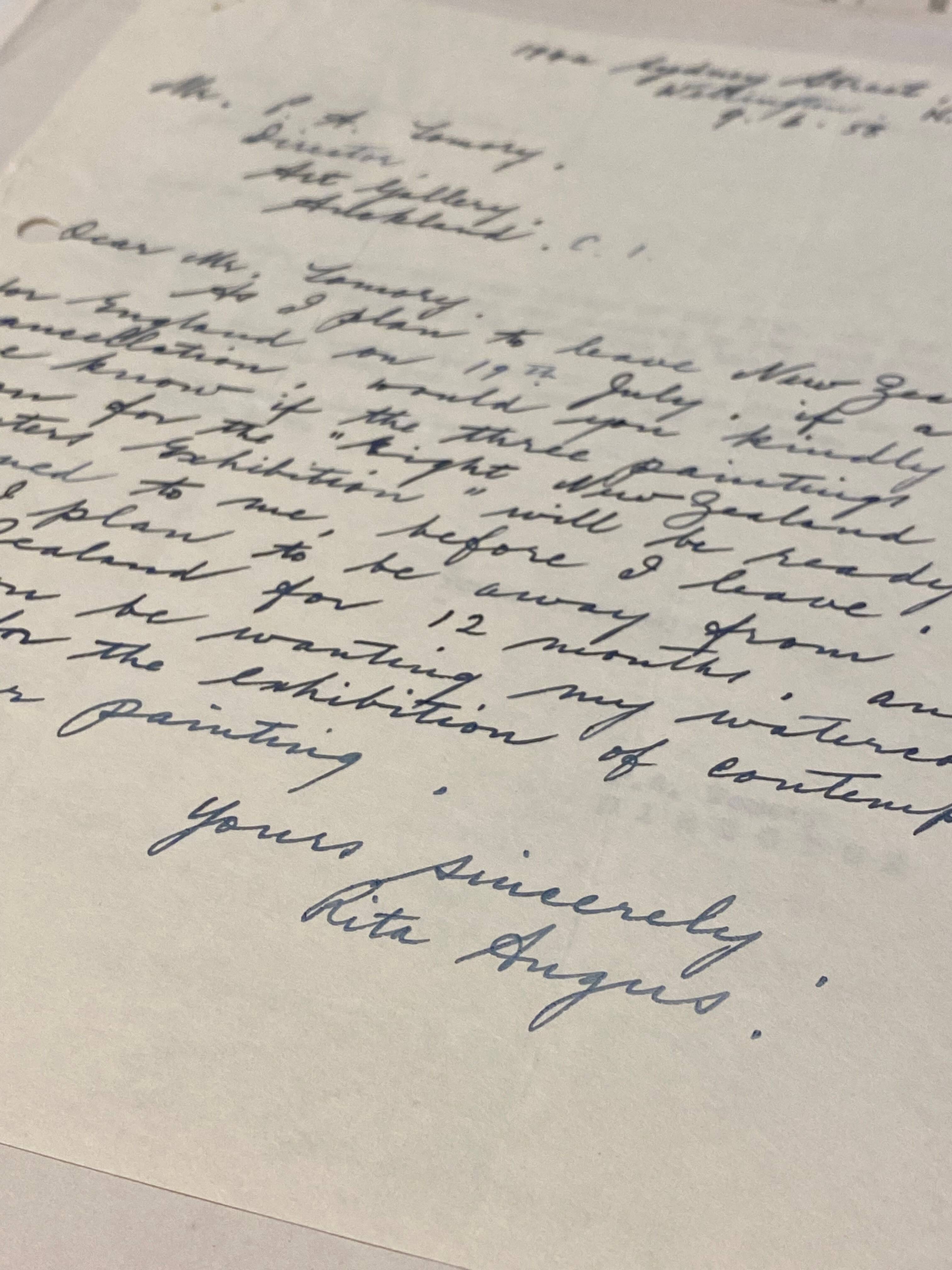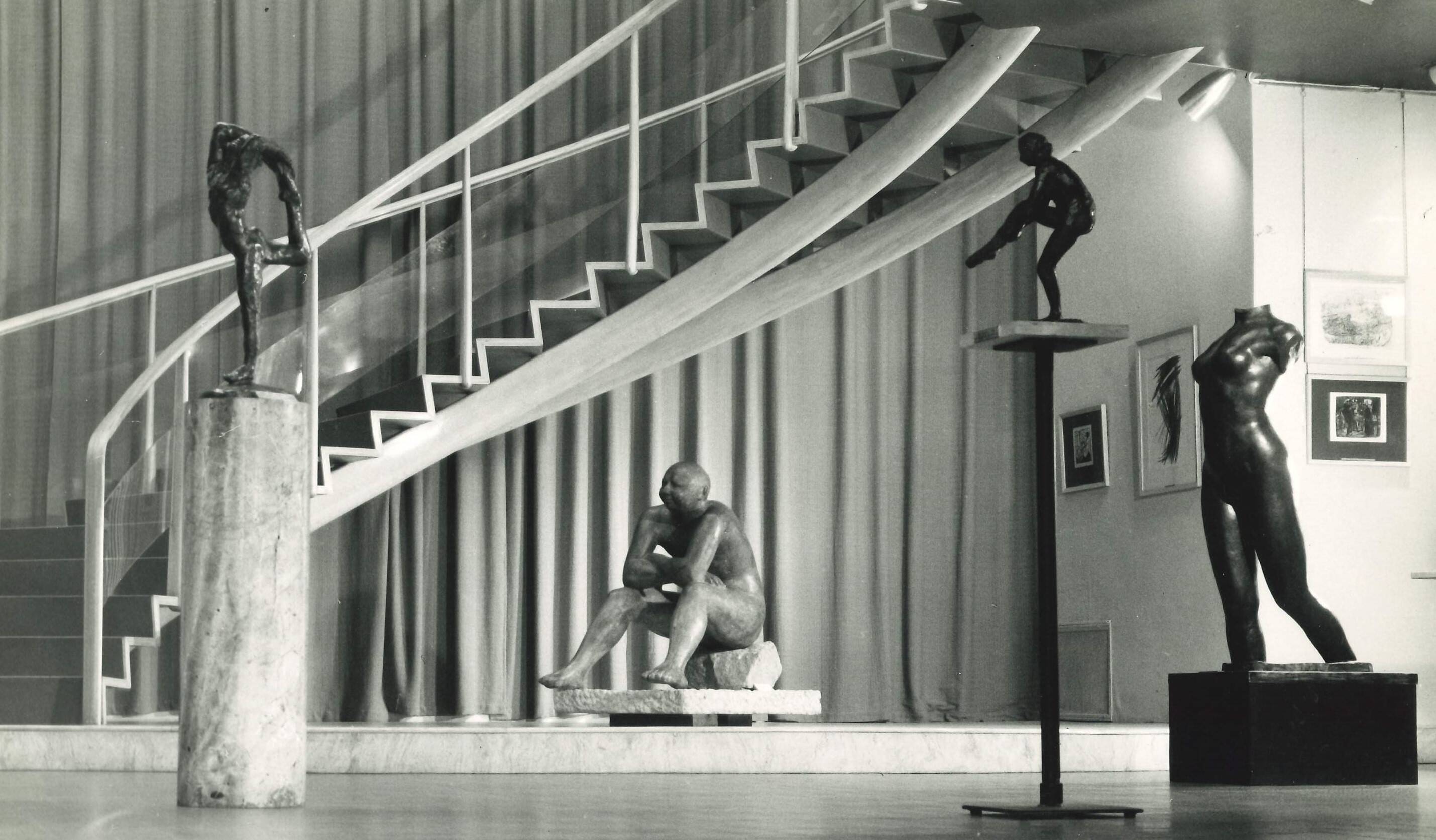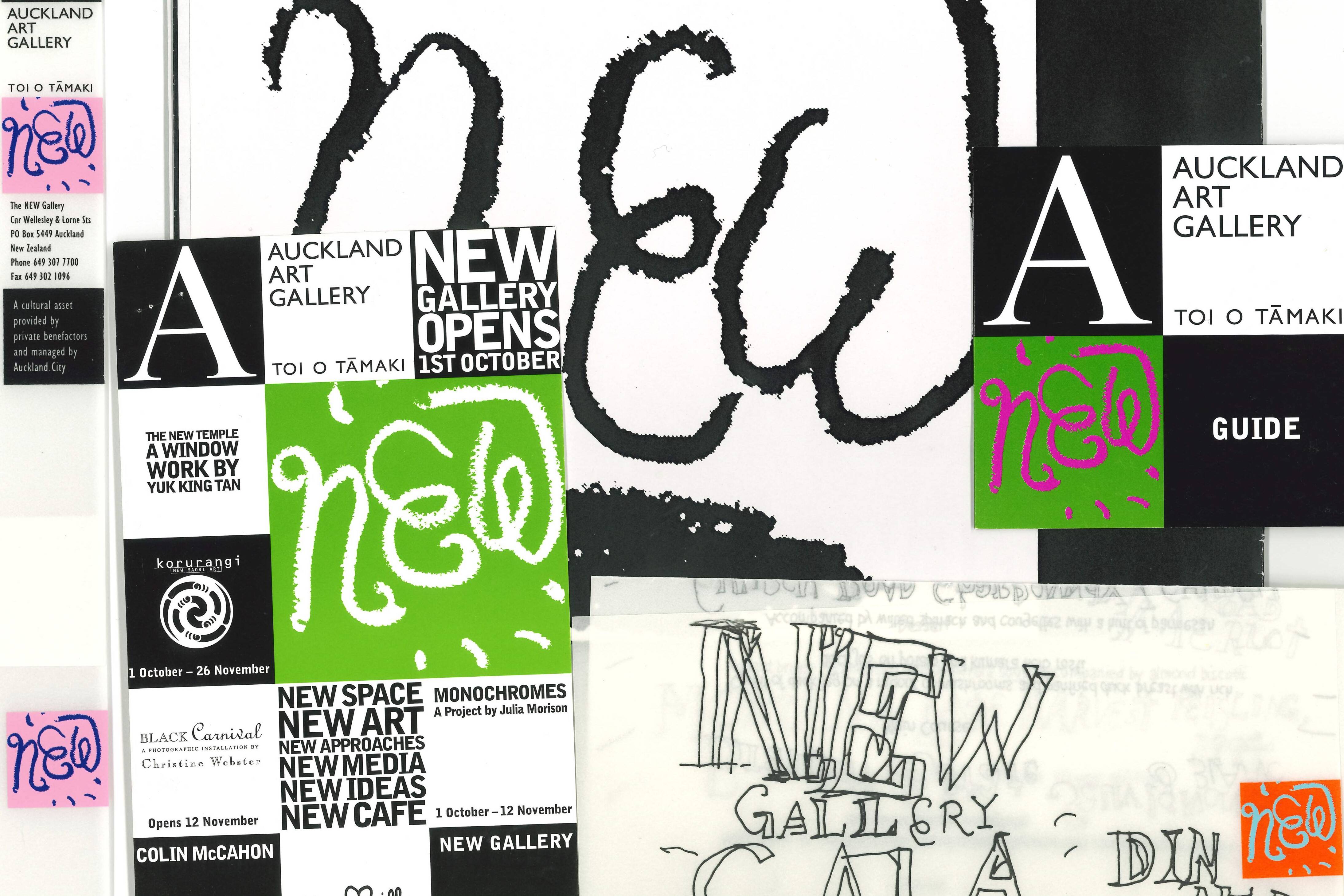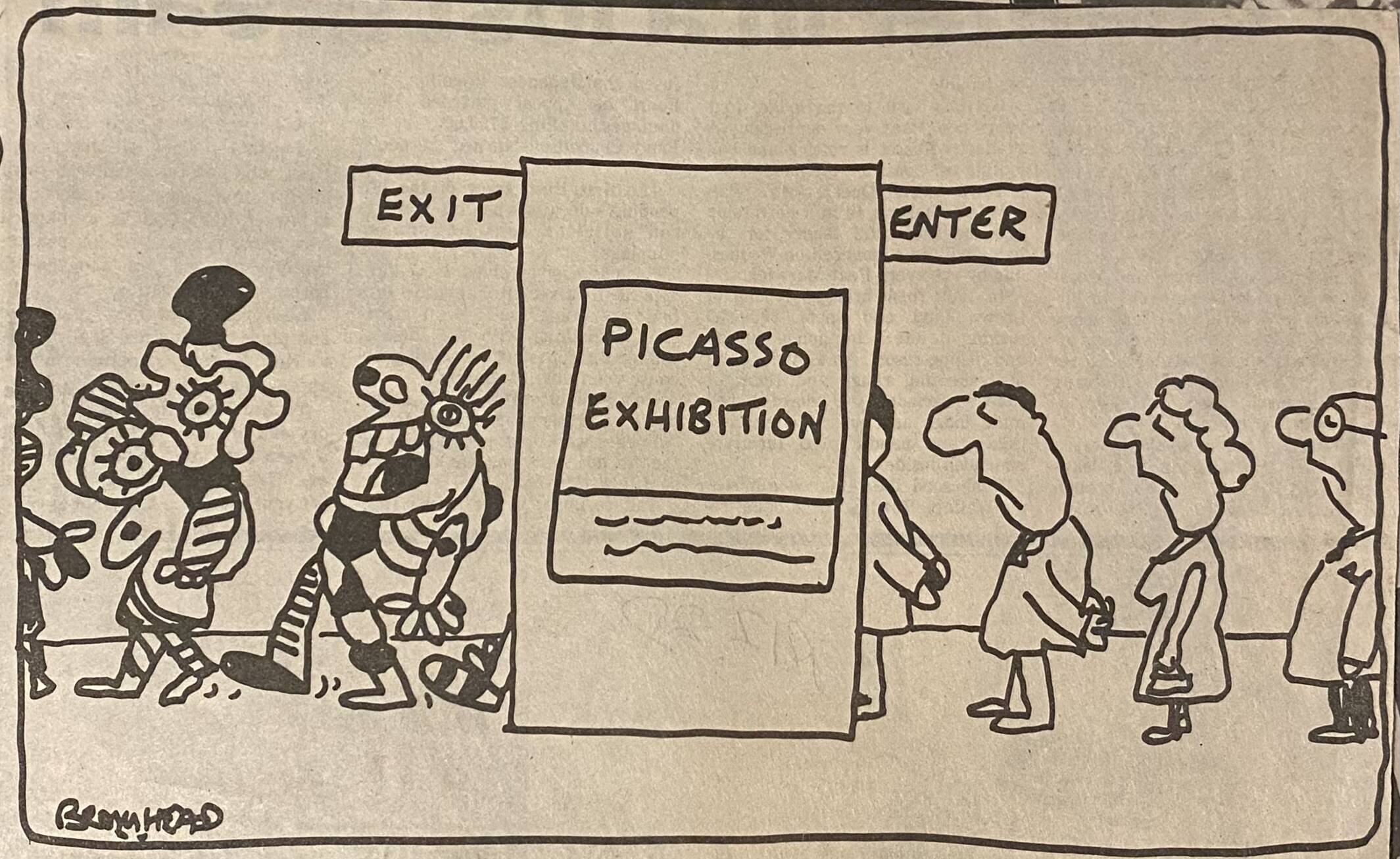Established and funded by John Mayo, the annual Marylyn Mayo Internship offers training and work experience for people who would like to pursue a career in the arts. Each year, interns contribute to work in different areas of the Gallery, including in curatorial, education, public programming, print and electronic publications, communications, audience research and development, conservation and collection management. Previous projects have included restoring Frances Hodgkins’ Still Life: Anemones and Hyacinths, circa 1925; researching dates for artworks in the collection; assessing and devising a strategy for documenting time-based artworks in the collection; and researching, writing and digitising material for the Gallery’s Lindauer Online Project.
In the below article, 2023 intern Hannah Owen shares insights into her work documenting and assessing the Gallery’s archives of exhibitions from 1927 to 2018. Read more to see fascinating images of past exhibitions at the Gallery and how the building has changed over the last 96 years.
